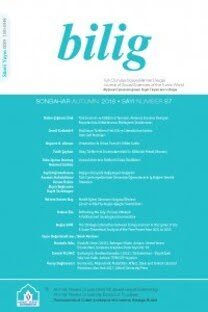Functions of the So-called Passive Morpheme-(I)I-in Kazakh
Kazak Türkçesinde Pasiflik Eki Olarak Adlandırılan -(I)I- Ekinin İşlevleri
___
Babby, L. (1981), A transformational Analysis of Voice in Turkish: Passive, Derived Intransitive, Impersonal, and Causative. Cornell Working Papers in Linguistics 2, 2-31.Erdal, M. (1991), Old Turkic Word Formation: A Functional Approach to the Lexicon. Vol.2. Otto Harrassowitz, Wiesbaden.
Isqaqov, A. (1991), Qazirgi Qazaq Tili. Ana Tili, Almatı.
Khasenova, A. 1959. Qazaq Tilindegi Tuvındı Tübir Etistikter. Qazaq SSSR Gılım Akademiyası, Almatı.
Kornfilt, J. (1991), A Case for Emerging Functional Categories. Syntax and Semantics 25, 11-35.
Perlmutter, David M. (1978), “Impersonal Passives and Unaccusative Hypothesis.” BLS 4, 157-189.
Sezer, E. (1991), Issues in Syntax. Doctoral Dissertation, Harvard University, Cambridge, Massachusetts.
Taneri, M. (1993), The Morpheme -Il/(I)n: The syntax of Personal Passives, Impersonal Passives and Middles in Turkish, Doctoral Dissertation, University of Kansas.
Tietze, A. (1989), “Observations on the Convergence of Passive and Medio-reflexive Verb Forms: The Case of Modern Turkish”. Studia Linguistica et Orientalia Memoriae Haim Blanc Dedicata (P. Wexler, A. Borg, S. Somekh, eds.). 283-88.
- ISSN: 1301-0549
- Yayın Aralığı: 4
- Başlangıç: 1996
- Yayıncı: Ahmet Yesevi Üniversitesi Mütevelli Heyet Başkanlığı
Sosyal Bilgiler Öğretmen Adaylarının Sosyal Bilimler Hakkındaki Görüşleri
Süleymanname'de Eski Türk Destanlarına ait Unsurlar, Dil-Üslup ve Motifler
Batılı Üç Eserde 'Romantik Kurban' Cem Sultan
Türk Modernleşmesinde Sefir ve Sefaretnamelerin Rolü
Functions of the So-called Passive Morpheme-(I)I-in Kazakh
Bağımsız Denetim Firmaları Bakış Açısıyla Türkiye Bağımsız Dış Denetim Sisteminin Değerlendirilmesi
Siyasal Sosyalizasyon Sürecinde Sosyo-Ekonomik Faktörlerin Rolü
XVII. Yüzyılda Bir Şenlendirme (İhya) Uygulaması: Mormoc Köyü'nün İmarı (Kelkit)
